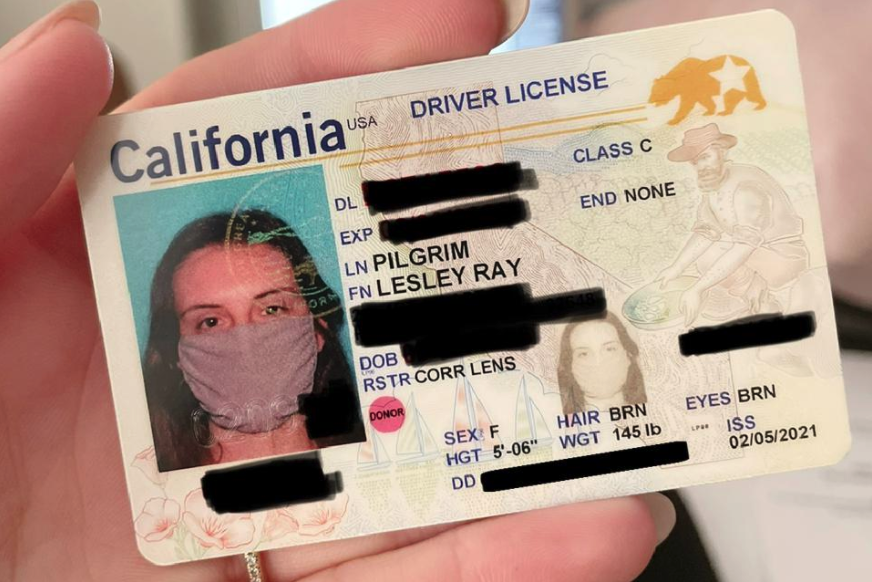
Amanda Farrell - 3 years ago

Notaries are charged with the critical task of verifying the identity of signers, so spotting a fake ID is an integral part of notarizing documents. Still, there are over 200 different forms of government-issued IDs, and not every state sets clear guidelines on identification requirements.
The notary’s job of preventing fraud is made more difficult when people change their names and appearances or when serving communities that lack access to current photo IDs.
Notaries should be sure to use good judgment and follow these tips when navigating various dilemmas of verifying a signer’s identity.
Some states will list which forms of identification are required to execute a notarization. Others only specify required elements, like a photo, physical description, signature, and issuing state. While a best practice is to ask for a valid or unexpired ID, laws in many states don’t impose it.
Each notary will have to determine if the ID presented meets their state’s guidelines. Some examples include:
Florida’s list of acceptable IDs includes:
These IDs must also be current or issued within five years and include a serial or identifying number.
California doesn’t allow a notary to confirm identity on personal knowledge. Required identification is similar to Florida’s list and includes an employee ID issued by governing jurisdiction within California. All of these IDs must also be current or issued within five years.
Texas requires an ID issued by the federal government of any state government with a photo and signature before proceeding with a notarization.
Tennessee, Pennsylvania, and others provide specific lists, so be sure to consult your commissioning authority’s website.
If your state has no guidelines on identification, the best practice is to request a current ID that contains at least the signer’s photo, signature, and physical description. IDs that meet this standard include:
Requiring identification is only the first step to stopping fraud. A notary must also become familiar with an ID’s features to determine whether it is authentic or not.
States create identification cards with some impressively enhanced security features to deter fraud. However, if you don’t know what details to examine, the ID might fool you. Here’s an infographic from ID Checking Guide to help. ![How to Spot a Fake ID[Infographic]](https://www.driverslicenseguide.com/images/idguide-infographic.jpg)
© 2014 Drivers License Guide Co.
The Real ID Act goes into effect on October 1, 2021. Anyone entering a federal building or military base or traveling on a domestic flight must present REAL ID-compliant driver’s license or state ID cards (or another acceptable form of identification like a passport). These IDs are generally marked with a star located on the upper right and indicate the holder has undergone a secure identity verification and issuance process.
These IDs are designed to inhibit a criminal or terrorist from evading detection using fraudulent identification. The rules were first announced in 2005 in response to the terrorist attack on 9/11. Since then, each state has rolled out its new processes and designs to comply with the regulations. COVID-19 has created some surprising snafus in issuing the compliant IDs, including this woman’s recent experience at a California DMV office. Can you spot what’s wrong with her ID?

New technology and federal standards like the REAL ID Act make duplicating identification more complicated, but many criminals have access to information and equipment to reproduce the standard security features. They also rely on your ignorance of other state’s identification designs.
After checking the ID for any missing or poorly executed security features, be sure to do a thorough physical examination of the card.
Physical inspection should include:
While you may be familiar with your state’s and nearby state’s designs of driver’s license, criminals intending to commit fraud will rely on your ignorance of lesser-known or seen state designs to dupe you.
Between driver’s license, passports, and state and federal IDs, there are over 200 different government-issued IDs. A human can’t memorize every acceptable form of ID.
Fortunately, notaries and other professionals can purchase ID-checking guides to determine the right design. If you don’t have access to a directory, look for:
Borrowed or stolen IDs are among the most common types of ID fraud, so after establishing the legitimacy of the government-issued identification, you’ll want to test the person presenting the ID.
Many states allow residents to renew their driver’s license online or by mail, which means many people could go more than a decade before retaking their photo. People regularly change their style, so avoid relying on mutable characteristics like hairstyle, hair color, or facial piercings.
Instead, examine facial features like the spacing between eyes, nose, and mouth, the shape and angle of brow ridges and jaw lines, and the shape and placement of ears.
Some people can convincingly pass as another person, and matching unfamiliar faces to photographic identification is difficult even for seasoned professionals. Investigate the identification further for physical details that don’t match the person in front of you. Do height, hair, and eye color match?
Ask about the information on the card while holding it, like zip code or date of birth.
Make sure the license is still valid or hasn’t expired. If you’re still uncertain, check for a duplicate stamp. While a duplicate license doesn’t instantly indicate fraud on its own, coupled with other suspicious behavior, it may help you determine how to handle the situation.
If you’re still unsure about proceeding with a signing or if the signer has no ID, there are some options. What is right for your particular situation must be determined by your best judgment.
If the first photo ID presented is unsatisfactory in some way or if the behavior of the signer raises flags, ask to see another photo ID to help verify identity. Don’t lower your standards by accepting documents easily forged and lacking the elements of a photo, signature, and physical description. While a notary working in a state with less restrictive ID guidelines may ultimately decide to accept any form of identification, you must be prepared to defend the decision if the notarization is later challenged.
Obtaining and maintaining valid IDs can be difficult for poor, elderly, rural, and minority residents, and some people may mistakenly believe their ID is current. Millions of people are without current IDs because of a lack of transportation or finances. COVID-19 presents new obstacles for people in renewing their licenses.
If confronted with a scenario where the signer has no ID or an expired ID, you may be able to use a credible witness to identify the signer. The identifying witness must know the signer and join the signing session to take an oath or affirmation.
This option may not be available in your state or may require additional stipulations. For instance, in California and Florida, two witnesses must swear or affirm the signer’s identity. States may also have placed temporary guidance on notarizing documents for signers without current IDs because of hardships stemming from COVID-19. Check your Commissioning Authority’s website for more information.
Some of the security features can be seen with the naked eye, while others require technology or microscope aid to see. As more transactions have moved to the digital space, the demand for technology to verify identity without interrupting the customer experience is growing.
ID scanners and magnetic stripe readers are the most common deterrent used in businesses like bars to catch a fake ID. The reader quickly processes the ID’s barcode or magnetic stripe and pulls the encoded information on a screen. This includes information like the name, address, date of birth, and physical description of the cardholder. It won’t, however, verify if the license number is valid or provide any other information that isn’t publicly accessible.
The information scanned from the barcode or magnetic stripe doesn’t match the information on the card on many fake IDs. Portable barcode readers are available for purchase, but they’re pricey.
Smartphone applications like Scannr allow businesses to leverage this technology to read barcodes minus the bulky appliances and wires.
Software applications powered by machine learning combined with computer vision or Optical Character Recognition (OCR) technology can scan various IDs and compare the images to stored ID template references. This type of software found in remote online notarization platforms like ProperSign can check foreign and domestic passports, any state’s driver’s license, and other federal or state ID cards, allowing notaries to confidently rely on the computer’s eye to confirm the authenticity of the ID.
If you’re not able to confirm the signer’s identity satisfactorily, notaries may stop the signing. This is one of the many legitimate and legal reasons to refuse to notarize a document. Notaries should tactfully decline the request, explain why the notarization can’t be executed, and document the interaction and reasoning for refusal for auditing purposes.
There’s no one solution to stopping ID fraud. Successful notaries follow their state’s legal requirements and incorporate the best practices that fit each signing’s unique challenges.